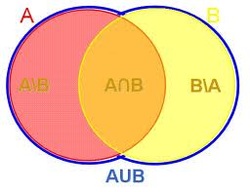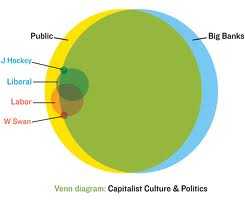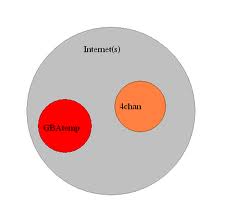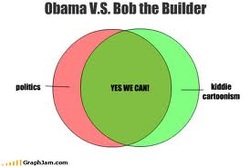Let me illustrate the dog/ wolf/ wolf subspecies relationship with these Venn Diagrams:

Picture One illustrates the relationship between Wolves (A) and Dogs(B), where (A intersect B) approaches 100%. When and if the intersecting section is 99.80, that is an average, and the remaining .2 (or whatever the current answer is thought to be) cannot be identified repeatedly in any 2 random specimens. Note one set is not a subset of the other set, ie. A is not a subset of B.

In the larger olive section of Picture Three (as in Picture Two), we are getting closer to the complete 100% overlap of 'dogs AND wolves'. The blue and yellow sections would in total add up to the .2 (or whatever the current answer is thought to be) rotating/moving difference between wolves and dogs. Ignoring the other little circles here, I think this is a realistic representation of the 'set of Wolves' and the 'set of Dogs' genetically where dogs are variants or a 'variation' of wolves.

Picture Four might be an illustration of Canis lupus (Genus species) in grey and any 2 subspecies in red and orange. Note that they (the subspecies) ARE complete subsets of the supergroup (species) as is required of a subspecies in modern phylogenetic systematics. Note this SUBspecies relationship is quite different than that of the dog/wolf relationship where dogs are variants or 'variations' of wolves as in Picture Two.
Copyright 2011

